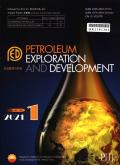Intelligent optimization method of fracturing parameters for shale oil reservoirs in Jimsar Sag, Junggar Basin, NW China
IF 8
Q1 ENERGY & FUELS
引用次数: 0
Abstract
For shale oil reservoirs in the Jimsar Sag of Junggar Basin, the fracturing treatments are challenged by poor prediction accuracy and difficulty in parameter optimization. This paper presents a fracturing parameter intelligent optimization technique for shale oil reservoirs and verifies it by field application. A self-governing database capable of automatic capture, storage, calls and analysis is established. With this database, 22 geological and engineering variables are selected for correlation analysis. A separated fracturing effect prediction model is proposed, with the fracturing learning curve decomposed into two parts: (1) overall trend, which is predicted by the algorithm combining the convolutional neural network with the characteristics of local connection and parameter sharing and the gated recurrent unit that can solve the gradient disappearance; and (2) local fluctuation, which is predicted by integrating the adaptive boosting algorithm to dynamically adjust the random forest weight. A policy gradient-genetic-particle swarm algorithm is designed, which can adaptively adjust the inertia weights and learning factors in the iterative process, significantly improving the optimization ability of the optimization strategy. The fracturing effect prediction and optimization strategy are combined to realize the intelligent optimization of fracturing parameters. The field application verifies that the proposed technique significantly improves the fracturing effects of oil wells, and it has good practicability.
准噶尔盆地吉木萨尔凹陷页岩油储层压裂参数智能优化方法
准噶尔盆地吉木萨尔凹陷页岩油储层预测精度差、参数优化困难,是压裂改造的一大难题。提出了一种页岩油储层压裂参数智能优化技术,并通过现场应用进行了验证。建立了一个能够自动捕获、存储、调用和分析的自治数据库。利用该数据库,选取22个地质与工程变量进行相关分析。提出了一种分离压裂效果预测模型,将压裂学习曲线分解为两部分:(1)整体趋势预测,采用具有局部连接和参数共享特性的卷积神经网络与解决梯度消失的门控循环单元相结合的算法进行预测;(2)局部波动,通过集成自适应增强算法动态调整随机森林权值来预测局部波动。设计了策略梯度-遗传-粒子群算法,该算法能够自适应调整迭代过程中的惯性权重和学习因子,显著提高了优化策略的优化能力。将压裂效果预测与优化策略相结合,实现了压裂参数的智能优化。现场应用证明,该技术显著提高了油井的压裂效果,具有较好的实用性。
本文章由计算机程序翻译,如有差异,请以英文原文为准。
求助全文
约1分钟内获得全文
求助全文

 求助内容:
求助内容: 应助结果提醒方式:
应助结果提醒方式:


